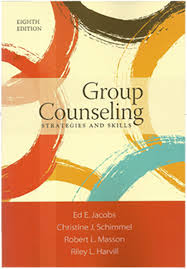Impact Therapy is an approach to counseling that shows respect for the way clients learn, change, and develop. The emphasis is on making counseling clear, concrete, and thought-provoking, rather than vague, abstract, and emotional. Impact Therapy is a multi-sensory approach that recognizes that change or impact comes from not only verbal but also visual and kinesthetic exchanges. It is a type of brief therapy although it is different from the work of Watzlawick, Weakland, and Fisch who have developed a school of therapy called “Brief Therapy.” Impact Therapy is a form of therapy that combines creative counseling techniques and certain counseling theories. It provides the counselor with ways to frame the counseling process as well as ways to assess the progress of a session. This approach is action and insight-oriented and often resolution-oriented. We call the approach Impact Therapy because it emphasizes helping the client as much as possible in each session. The therapist is always trying to get to the core of the problem by cutting off unnecessary details, irrelevant stories, and unfocused discussions. The impact therapist sees the goal of any therapy session as creating change or set in motion the process for change.
Impact Therapy is a very unique approach to counseling, integrating concepts from existing theories. Much is drawn from the theories of Rational Emotive Behavior Therapy (REBT), Transactional Analysis (TA), Gestalt, and the creative counseling techniques that were were first presented in Creative Counseling Techniques: An Illustrated Guide (Jacobs, 1992). The impact therapist combines REBT with creative props, drawings, analogies, and Gestalt therapy in a very different manner than the way this theory is traditionally taught. The impact therapist uses the ego states from TA with chairs, drawings, movement, and in combination with REBT in clear, concrete, and effective ways. Therapists who subscribe to Systems theory, Adlerian counseling, Reality Therapy, and most other theories will find Impact Therapy to be compatible. Impact Therapy serves as a solid bridge between theories and techniques and provides a clear way to understand the process and progress of a therapy session
Impact Therapy is an empowering approach to therapy that shows great respect for the client. Impact Therapy calls for the client to be active, thinking, seeing, and experiencing during the session. Impact therapists try to help clients help themselves by getting the clients to think rationally about their issues. Challenging clients’ self-talk and using analogies, props, movement, and additional chairs help make Impact Therapy sessions engaging and beneficial. Dependent relationships are rare in Impact Therapy since the counselor is always involving the client in many different ways.
Why Impact Therapy
Too often in our training workshops, we find that there is something missing from the “toolboxes” of counselors and therapists. Though counselors may be familiar with various theories and techniques, they do not always succeed in being effective with clients; they do not always have an impact. Many counselors use a rather slow process of counseling where much time is spent building rapport and responding with reflections and clarifications. We see the benefit in this for some clients, although we believe that for the majority of clients, a faster and more active approach to counseling can be more beneficial. Too often clients are frustrated by the pace of their therapist. We hear far too many stories of clients who experienced counseling that was slow, not focused, and, most of all, not helpful. Impact Therapy offers the practitioner ways to get more accomplished in a session and frees the counselor to be creative during the session.
Many counseling situations in mental health centers, drug and alcohol settings, and school settings demand that the counselor be able to engage the client rather quickly. Impact Therapy is an approach that calls for the counselor to speed up the counseling process by following some basic steps. Impact Therapy gets clients thinking for themselves thus promoting confidence and independence instead of dependency which is sometimes found in other therapies. Insurance companies are also demanding that therapy not be a long, drawn-out process. Certainly, we acknowledge that there are many counseling issues that require a number of sessions–such as, resolving sexual abuse, grief therapy, or recovery from an addiction to drugs or alcohol. Even with these kinds of cases, Impact Therapy can speed up the process since there is an emphasis on clients moving through their issues rather than “wallowing” in them. Also, the use of creative, multi-sensory techniques tends to speed up the counseling process.




